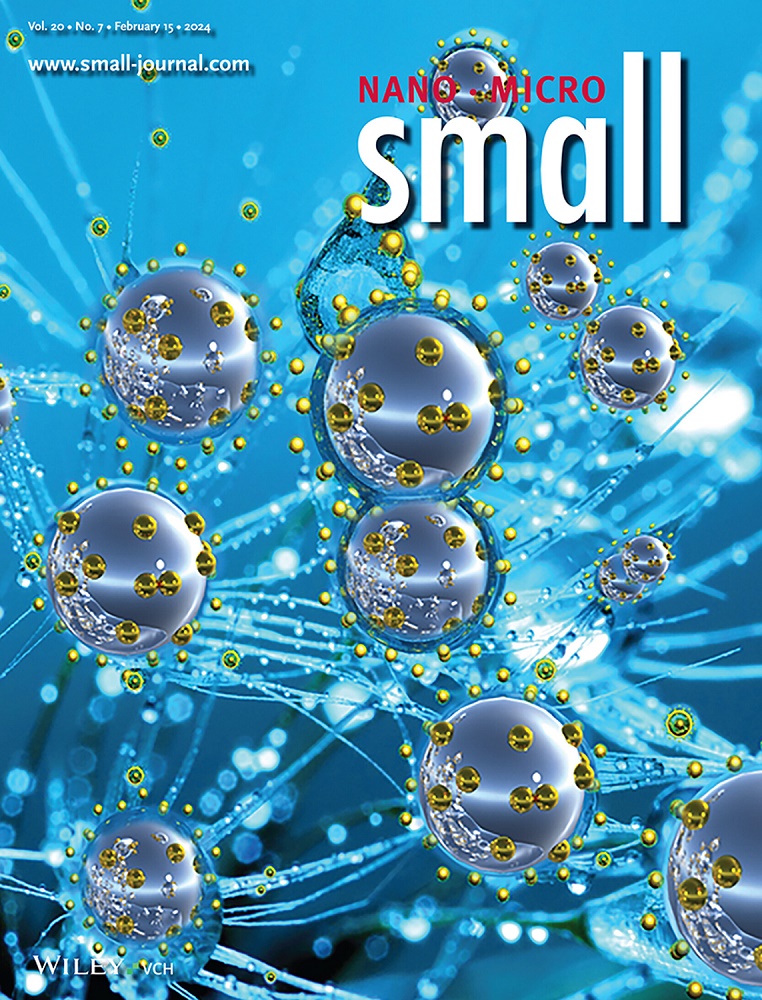Rational Engineering on Copper-Silver-Ruthenium Heterostructures for the Electrocatalytic Conversion of Nitrate and Glycerol.
IF 13
2区 材料科学
Q1 CHEMISTRY, MULTIDISCIPLINARY
引用次数: 0
Abstract
N Coupling nitrate reduction reaction (NO3RR) with glycerol oxidation reaction (GOR) establishes a sustainable "C─N co-conversion" electrolysis system to generate ammonium formate. Unfortunately, the rational design of high-performance bifunctional electrocatalysts remains challenging. Herein, we developed a 3D Ag/Ru-decorated CuO/Cu(OH)2 heterostructures supported by copper foams via interface engineering. The optimal catalyst exhibited outstanding NO3RR and GOR performance, achieving Faradaic efficiency (FE) of 97.3% and yield of 9.85 mg h-1 cm-2 at -0.5 V vs. RHE for NH3 synthesis, and FE of 82.6% and yield of 90.31 mg h-1 cm-2 at 1.55 V vs. RHE for formate production. Mechanistic studies revealed that the decoration of Ag and Ru atoms led to electron redistribution around the copper sites, promoting proton-coupled electron transfer and optimizing the adsorption of the reactants/intermediates. Notably, on the basis of the as-prepared bifunctional electrode, a "NO3RR || GOR" electrolyzer was constructed, which achieved simultaneous output of NH3 and formate with a current density of 100 mA cm-2 at only 1.48 V. The performance of the electrolyzer was further demonstrated using simulated nitrate pollutants and crude glycerol as feedstock, yielding 20.9 g of ammonium formate via a 4-h electrolysis. This work demonstrates a sustainable pathway for the synthesis of high-value-added ammonium formate by constructing an efficient bifunctional electrocatalyst through rational interfacial engineering.硝酸和甘油电催化转化用铜-银-钌异质结构的合理工程。
硝酸还原反应(NO3RR)与甘油氧化反应(GOR)建立了可持续的“C─N共转化”电解体系,生成甲酸铵。不幸的是,高性能双功能电催化剂的合理设计仍然具有挑战性。在此,我们通过界面工程开发了一种由泡沫铜支撑的Ag/ ru修饰的三维CuO/Cu(OH)2异质结构。最优催化剂表现出优异的NO3RR和GOR性能,与RHE相比,在-0.5 V条件下合成NH3的法拉第效率(FE)为97.3%,产率为9.85 mg h-1 cm-2;与RHE相比,在1.55 V条件下合成甲酸酯的FE为82.6%,产率为90.31 mg h-1 cm-2。机理研究表明,Ag和Ru原子的修饰导致电子在铜位点周围重新分布,促进质子耦合电子转移,优化了反应物/中间体的吸附。值得注意的是,在制备的双功能电极的基础上,构建了“NO3RR || GOR”电解槽,在1.48 V电流密度为100 mA cm-2的情况下,实现了NH3和甲酸盐的同时输出。以模拟硝酸盐污染物和粗甘油为原料进一步验证了电解槽的性能,通过4小时的电解产生20.9 g甲酸铵。本工作通过合理的界面工程构建高效的双功能电催化剂,为高附加值甲酸铵的合成提供了一条可持续的途径。
本文章由计算机程序翻译,如有差异,请以英文原文为准。
求助全文
约1分钟内获得全文
求助全文
来源期刊

Small
工程技术-材料科学:综合
CiteScore
17.70
自引率
3.80%
发文量
1830
审稿时长
2.1 months
期刊介绍:
Small serves as an exceptional platform for both experimental and theoretical studies in fundamental and applied interdisciplinary research at the nano- and microscale. The journal offers a compelling mix of peer-reviewed Research Articles, Reviews, Perspectives, and Comments.
With a remarkable 2022 Journal Impact Factor of 13.3 (Journal Citation Reports from Clarivate Analytics, 2023), Small remains among the top multidisciplinary journals, covering a wide range of topics at the interface of materials science, chemistry, physics, engineering, medicine, and biology.
Small's readership includes biochemists, biologists, biomedical scientists, chemists, engineers, information technologists, materials scientists, physicists, and theoreticians alike.
 求助内容:
求助内容: 应助结果提醒方式:
应助结果提醒方式:


